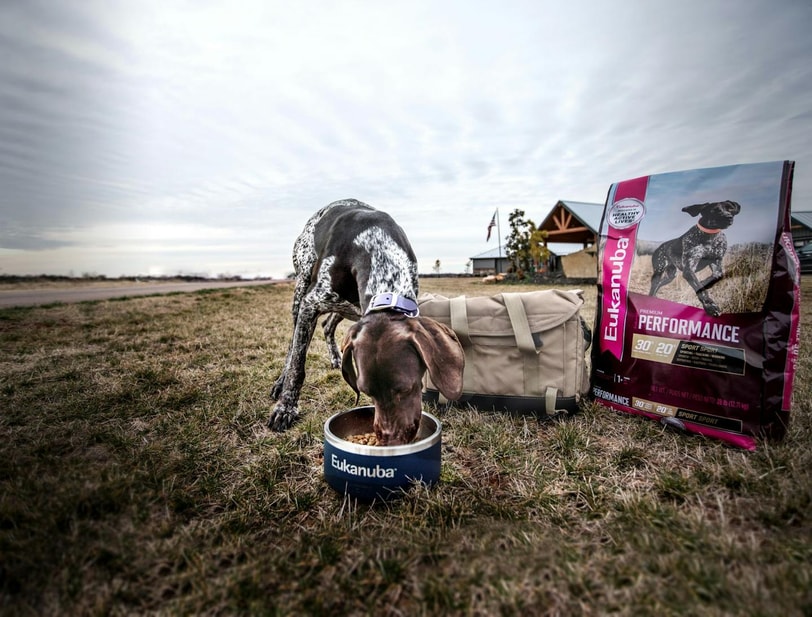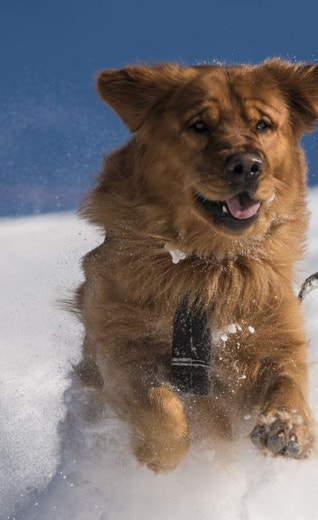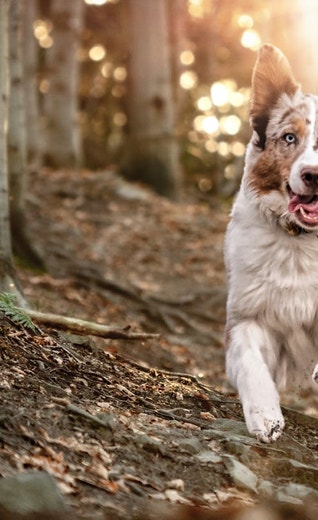
How To Feed Your Canine Athlete
Canine athletes are wired to work. Their work requires fuel appropriate to their exercise level, nutrients to support good physical health for their extra workloads and antioxidants to help with post-exercise recovery. Feeding your athletic dog isn’t difficult, but it should involve more than just filling up a bowl.
First, determine your dog’s body condition score. A body condition score is a number based on an evaluation of fat in a few key areas of the dog’s body. The score runs from 1-9, with 1 being seriously underweight, 9 being seriously overweight, and 4-5 being ideal. Every number over 5 means your dog is an additional 10% overweight, while every number under 4 means your dog is an additional 10% underweight.
Another way to determine your dog’s body condition score is by looking at his ribs, waist and hips.
- Ribs: You should easily feel your dog’s ribs when your fingers are held flat against his rib cage. If you need to use your fingertips to find the ribs, your dog is overweight. Visibly seeing your dog’s ribs generally means he’s underweight, with the exception of dogs that naturally have very lean body types like greyhounds, English pointers and the like.
- Waist: Ideal weight means you should see a tuck starting where the chest ends and the hips begin. If the line from the bottom of the chest goes straight, then your dog is probably overweight. If there is a big hollow area, your dog might be too thin. There should be a visible waist.
- Hips: If you can clearly see hip bones, then your dog is too thin. If there are bulges on either side, your dog is overweight.
Next, determine your dog’s daily caloric needs. Scientists use a formula to determine a dog’s basic daily caloric needs. It’s a simple two-step process. First, divide a dog’s body weight in pounds by 2.2 to convert it to kilograms. Then, raise the dog’s weight in kilograms to the ¾ power and multiply by 70.
Here’s an example:
- A 44-pound dog’s weight divided by 2.2 means he weighs 20 kilograms.
- 70(20kg) raised to the ¾ power is 662 kilocalories that your dog needs to consume every day.
Then, determine the dog’s daily and working caloric needs. If your 44-pound dog is performing light work, multiply that daily caloric need by 2. For moderate work, multiply the daily caloric need by 3. For heavy work, multiply the daily caloric need by up to 6. Here’s how it looks:
- Here’s how it might look for a 44-pound dog:
- 662 times 2 = 1,324 calories per day.
- 662 times 3 = 1,986 calories per day.
- 662 times 6 = 3,972 calories per day.
Divide the number of calories your dog needs by the kcals per cup listed on your bag of dog food, and you’ll be able to determine the optimal amount to feed. The feeding guidelines on the bag should also be consulted.
Feeding Time. But wait, there’s one more step to feeding your dog. It relates to when to feed your dog. Canine athletes should be fed two times a day. One-third of the daily feed should be fed in the morning at least 3 hours before their run time. It’s important that there be at least 3 hours in between feeding and run time so the dog’s body can digest his food. The remaining 2/3 of the food should be fed in the afternoon or evening at least two hours following their last run. Those two hours allow for a rest and cooling off period. The dog’s core body temperature will drop to his normal level, and he’ll be ready to eat. Provide fresh, clean water with each meal and throughout the day.




